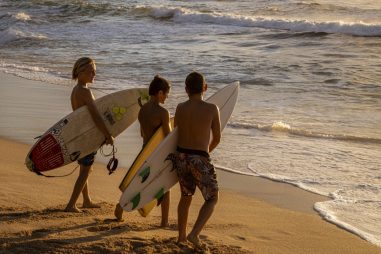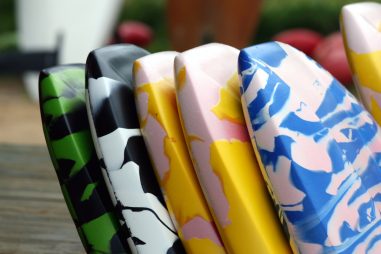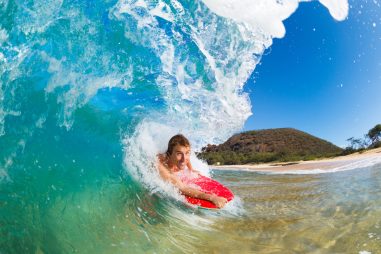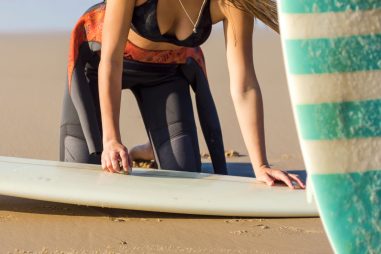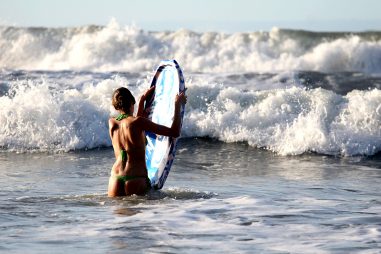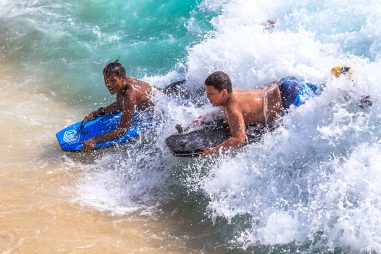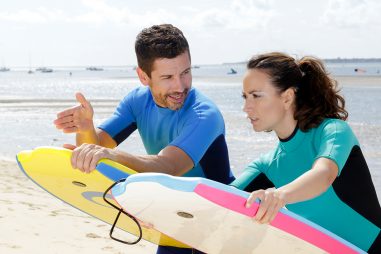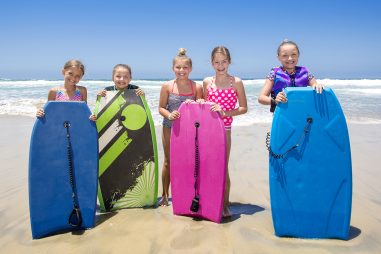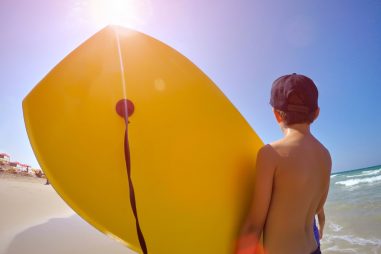
Boogie Boarding
The terms boogie boarding and bodyboarding are interchangeable since they mean the same thing, the surfer rides a board while lying prone upon it. The objective of the sport is to use the wave’s momentum to transport the rider to the shore. Upon reaching the shoreline, the rider swims back to where the waves are and does it all over again. The “boogie board” was trademarked in the 1970s by its inventor Tom Morey. However, the correct term should be bodyboard, which is commonly called now, but the name “boogie board” stuck.
Modern boogie boards are made from three principal core materials. The polypropylene board is the most versatile one since you can use it in cold or warm water. The polyethylene boards work better in cold temperatures than in warm water. The extruded polystyrene core is generally okay for cold or warm water but not as durable as the other two materials.
Several factors contribute to choosing which boogie board is best for you. The size and type of your board will depend on your height, weight, whether you’re an advanced surfer or a beginner, and the type of surfing that you want to do. A knowledgeable salesperson should be able to guide you through their selections. Some rules of thumb in choosing your board; it should reach up to your belly button when stood on its end, a thinner and narrower board if you’re riding bigger waves and going for speed and maneuverability, a thicker and wider board for smaller waves, and slower speeds.
Although you may not join any bodyboarding competition, it is a fun way to reset your mind and get your body in shape. It is an all-body workout; you use your legs, core, chest muscles, back muscles, and arms. All these efforts burn an average of 400 calories per hour. You get a full cardio workout without any of the joint stresses. Best of all, this is an activity for all ages so the whole family can enjoy this sport together.

